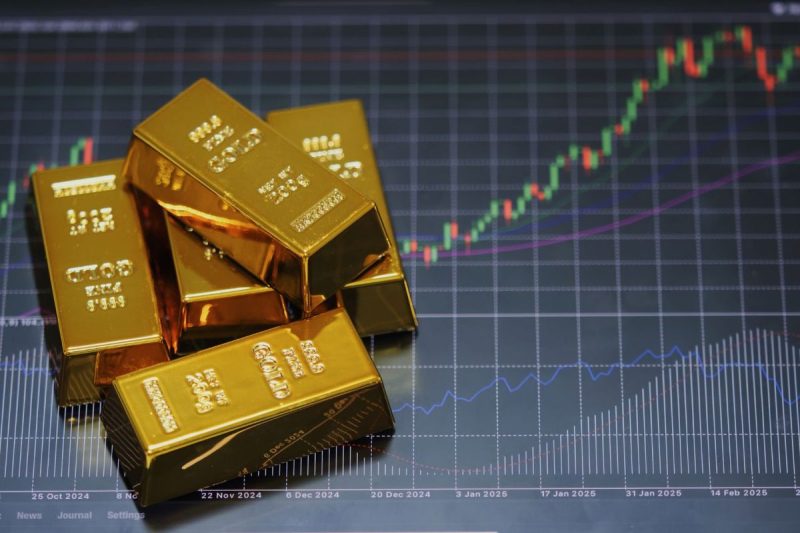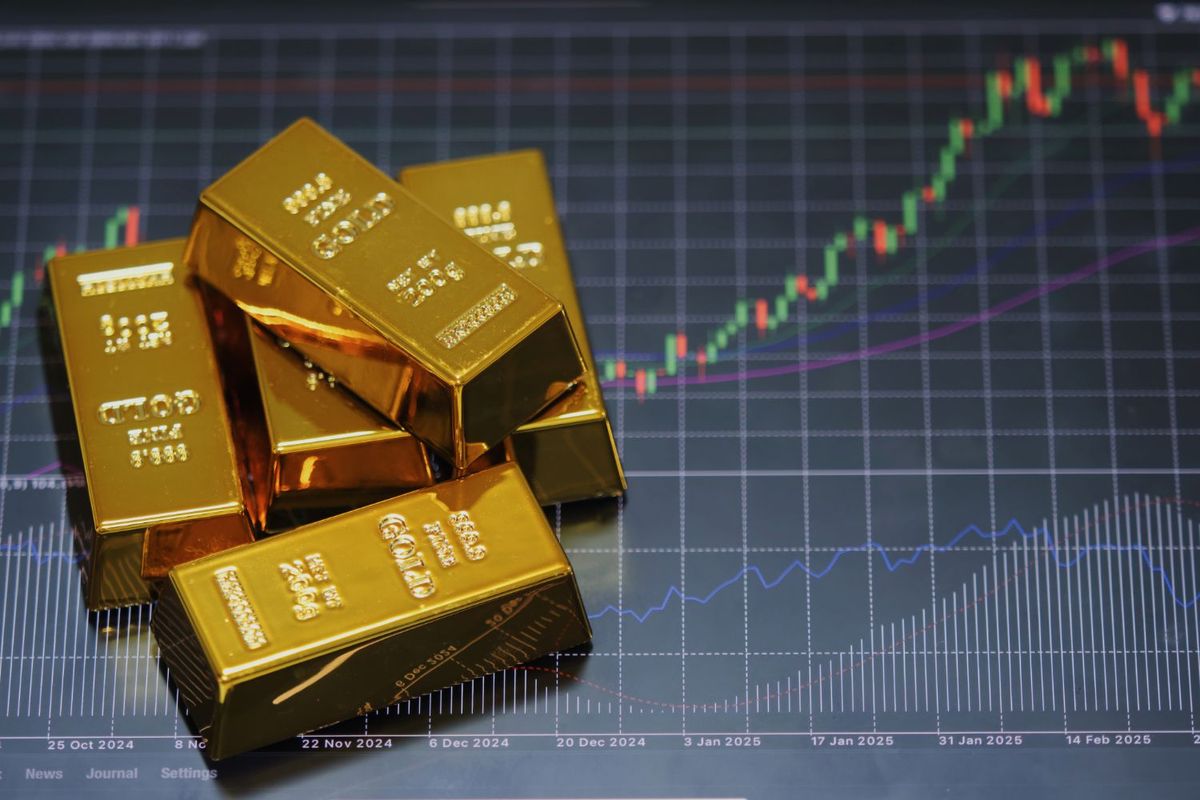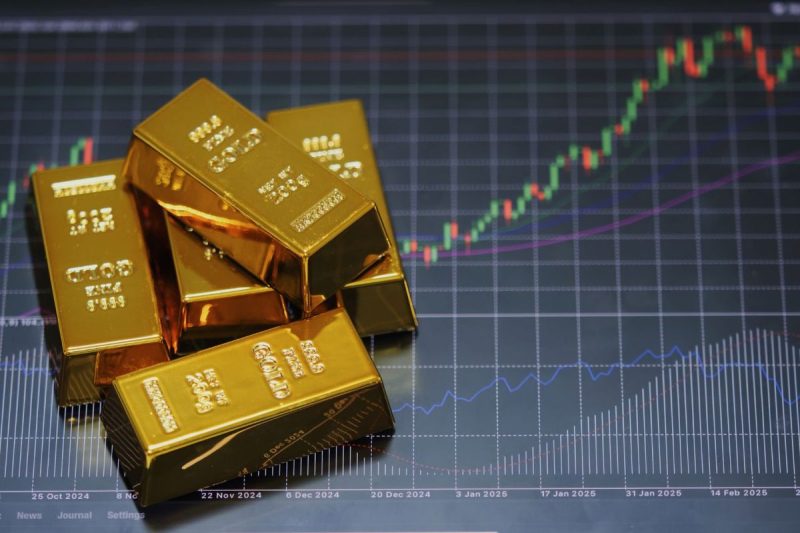

After soaring to all-time highs during the first quarter of 2025, how could gold follow up during Q2?
By setting new price records, of course.
Tariff threats, financial uncertainty and geopolitical tensions all fueled the yellow metal’s price rise during the second quarter of the year, which saw gold reach the US$3,500 per ounce mark for the first time.
While central banks continued to make gold purchases during the period, so too did retail investors, who shied away from US treasuries in favor of a more tangible safe-haven asset class.
What happened to the gold price in Q2?
Gold had an impressive run during the first quarter of the year, steadily rising from US$2,658.04 on January 2 to US$3,138.24 on April 2, leaving investors to wonder how much more gas was available for Q2.

Gold price, April 1 to July 10, 2025.
Chart via Trading Economics.
The price of gold started the second quarter on a downswing, falling below the US$3,000 mark by April 8, but quickly found momentum and soared to its quarterly high of US$3,434.40 on April 21.
It broke through the US$3,500 threshold briefly during the day’s trading session.
However, the gains were temporary, and gold once again fell; by May 1, it had dropped to US$3,237.30.
The metal saw a slight rebound to US$3,400.70 before the May meeting of the US Federal Reserve, but it came under pressure after that and had fallen to US$3,185 by May 14.
The end of May saw more tailwinds for the gold price, pushing it first to US$3,358 by May 23, then to US$3,381.70 by June 2. By the middle of the month, it was back to trading above US$3,400. Since that time, the precious metal has remained mainly above the US$3,300 level, closing the quarter at US$3,303.30 on June 30.
Tariff uncertainty helps boost gold price
The biggest story from the first quarter has carried over into the second quarter: tariffs.
Since the start of his second term in the Oval Office, US President Donald Trump has applied the threat of tariffs like a cudgel in trade talks with other countries. His long-held belief is that other nations, even longtime allies, are benefiting from trade with the US, while the US itself is facing detrimental effects.
During the first quarter of the year, the Trump administration levied tariff threats against Canada and Mexico. While most of his promised import fees were dialed back at the eleventh hour, a 25 percent tax was still applied to imports of Canadian steel and aluminum, as well as non-CUSMA-compliant automobiles and parts.
On April 2, Trump announced a broader set of tariffs on nearly every country in the world, regardless of trade status with the US. Dubbed “Liberation Day” by Trump, the executive order applied a baseline 10 percent fee to all imports from most countries to the US, plus significant reciprocal measures against countries with the largest trade deficits.
The new measures, set to be implemented on April 9, created panic among investors, causing a global market meltdown. Fear also spread to US debt holders, such as Japan and Canada, which began to sell US treasuries, pushing up the 10 year bond yield. Spooked investors rapidly flocked to gold, pushing the price to record highs above US$3,400.
“The bond market understands that Washington is so broken and the debt situation is so bad,’ he explained. ‘It varies in degrees compared to other countries, but everybody’s in the same boat. That’s why gold all of a sudden … gold is the safe haven now, even more than treasuries. And I don’t think a lot of people every thought they’d see that again.’
Ultimately, the stock market turmoil and the shift in bond market sentiment brought about a quick reversal from Trump, who paused his tariff plans for 90 days. Although the gold price showed signs of easing as market participants calmed, the metal remained high through the end of the quarter as uncertainty remained near the surface.
The pause was set to expire on July 9, but the White House announced a last-minute extension delaying the implementation of the tariffs on all but 14 countries, including Japan, South Korea and South Africa.
However, there are still underlying concerns.
The US-China trade war, which raged through much of the first half of the year, was put on hold on May 12 after tariffs between the two largest economies reached their peak, adding headwinds to the gold price. Up to that point, the US had levied a 145 percent import tax on Chinese goods while China had applied a 125 percent tax on US imports.
Although tensions have stabilized since the pause, on July 7, China warned the US against reigniting conflicts. China also said it would retaliate against any country that makes deals with the US to China’s detriment.
Geopolitical tensions erupt in the Middle East
Financial uncertainty was a key driver of the gold price through the second quarter as investors sought to diversify their portfolios amid a chaotic investment landscape, but it wasn’t the only factor.
Geopolitical tensions also played a significant role, particularly in the Middle East.
With the Israel-Gaza conflict now past 18 months, the larger fear was that it would spill into a broader regional war.
Those fears were stoked in late May, when there was speculation that Israel was preparing to attack nuclear facilities in Iran. The news helped pull gold out of monthly lows as more investors sought the safety of the metal.
Ultimately, the speculation was true — on June 12, Israel launched attacks against key nuclear sites in Iran, causing Iran to launch counterattacks against targets in Israel and providing further tailwinds for the gold price.
What’s driving demand for gold?
Other support for the gold price came from continued purchases from central banks.
According to World Gold Council data, central banks bought 244 metric tons of gold in Q1. The amount was 24 percent higher than the five year quarterly average, but 9 percent lower than the average from the last three years.
The largest first quarter gold buyers were the National Bank of Poland, which added 49 metric tons of the metal to its holdings, increasing its total to 497 metric tons. This was followed by the People’s Bank of China, which purchased 13 metric tons, bringing its reported gold reserves to 2,292 metric tons
In another report, the World Gold Council indicates that despite high prices, central banks continued to buy gold in May, albeit at a slightly reduced pace, with a net 20 metric tons entering their reserves.
But it’s not just central banks that are picking up gold.
“In the past, there has been relatively little involvement, even to now, from western retail investors in this move. This has been overwhelmingly led by central banks and large funds,” Temple said.
However, he noted a shift in buying on the back of wider interest, pointing to gold’s popularity at Costco Wholesale (NASDAQ:COST), although he noted, ‘So far, this hasn’t moved the needle significantly.’
Temple added, “Traditionally the big needle mover when you’ve got these larger swings in markets and market sentiment has come from investors who are buying exchange-traded funds (ETFs) and buying the larger gold stocks, and then ultimately working their way down the food chain and buying the better exploration stories. We finally started in recent months to see some of that where it’s deserved. There have been some really nice moves.’
This idea is echoed in the World Gold Council’s June ETF report, which indicates that ETF flows ended the first half of 2025 with the highest semiannual inflows since the first half of 2020.
The North American movement led the way, with more than US$4.8 billion entering the market in June, bringing the total for the first half of the year to US$21 billion. This was followed by US$2 billion in inflows in Europe, with its first half total reaching US$6 billion. Asian markets added US$610 million with a first-half record of US$11 billion.
Gold price forecast for 2025
The expectation is that the factors that drove the gold price in H1 are unlikely to go away soon.
Trump continues to kick the tariff question down the road. And although a ceasefire has been called between Israel and Iran, tensions in the region are still high. The conflict between Russia and Ukraine is ongoing, with Russia escalating attacks at the start of July, to the point of invoking Trump’s ire.
“We were thinking that by the time you got into June, July, August, not only would you have some seasonal weakness, but you’d also have a situation where financial markets might have calmed down and taken a less pessimistic outlook to the economy, simply because the initial shock of Trump policies was in there and had been digested. What we’re seeing is a prolongation of that shock period.’
Financial uncertainty and conflicts were a theme echoed by Kandoshko.
She pointed to the July 9 — now August 1 — deadline for tariffs as a potential inflection point.
“This could spark another rally in gold prices if trade tensions escalate. I have a feeling that the existing tariffs will gradually push prices up, which might lead the Fed to hold off on cutting rates. In the grand scheme of things, higher inflation is likely to boost gold demand, especially from central banks,” Kandoshko said.
She also believes a weak US dollar will likely be a boon for gold, making it more attractive to overseas buyers.
Securities Disclosure: I, Dean Belder, hold no direct investment interest in any company mentioned in this article.

